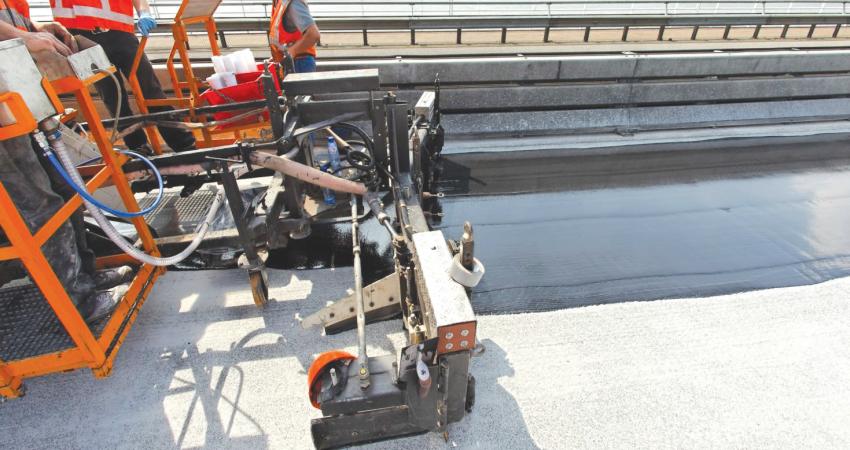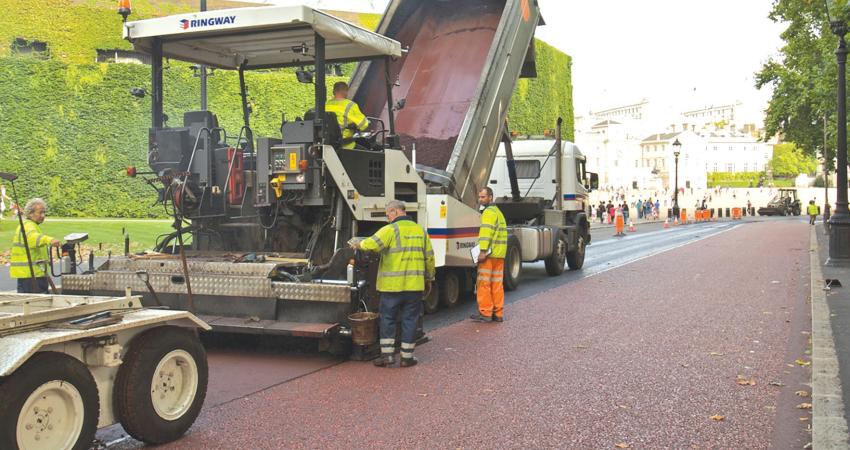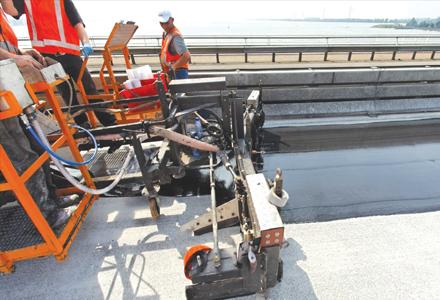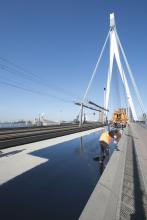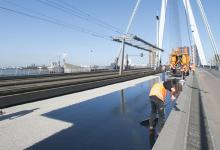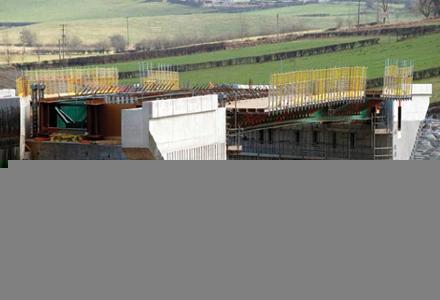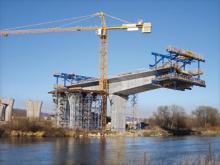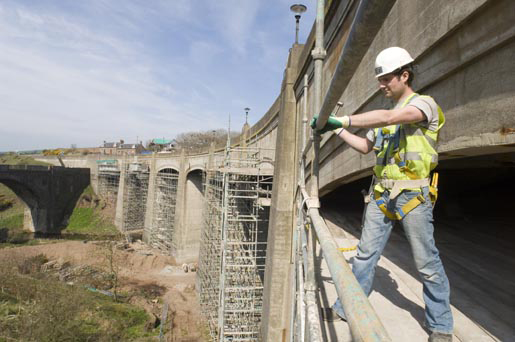
Modern products are making life easier for those who have to look after bridges in need of repair
A project to repair a bridge in the American state of Tennessee has brought safety benefits and improved the ride quality for drivers using the crossing. The Chickasaw Bridge spans the Ellington Parkway and it has benefited from a rehabilitation job by contractor Jamieson Construction. The roadway on the bridge was in a poor state and required frequent patching, and to tackle the problem, the Tennessee DOT considered a range of options, selectingThe 9.5mm thick waterproof overlay adds minimal dead load to the structure, while the new aggregate surface will offer high skid resistance for many years. The overlay also helps to reduce the permeability of the deck, cutting corrosion of the steel and tackling concrete spalling.
Keeping one lane open to traffic, Jamieson Construction planned the project to take four days. It was completed in just 12 hours.
Meanwhile, the poor weather experienced by many European countries during last winter has shown how some Dutch roads and bridges have benefited from the use of the latest
The severe weather caused many obstructions on Dutch highways, exposing numerous weak points and poorly finished areas, and this has been particularly apparent on a number of bridges, which suffer the effects of the freeze-thaw process. A combination of the frost and porous wearing courses caused big holes to develop in many roadways, with some areas crumbling off and top layers cracking.
However, those roads fitted with Bolidt wearing courses are still intact. Commissioned by the Ministry of Waterways and Public Works, Bolidt laid its Boligrip wearing courses on several large bridges and the performance of this material is said to have shown huge benefits.
The A1, A6 and A27 highways were severely damaged, and users of the Holland Bridge, connected to the A6 highway, even suffered damage to vehicle windscreens caused by small loose stones. Drivers say the bridge's emergency repairs were inadequate and too late, and the Ministry admits to the large number of complaining road users and the inadequate attempts to solve the problems.
Now, the Ministry has been applying more and more roads with the wearing courses of Bolidt, which during the last winter season " have proven to surpass the traditional material in quality, durability and maintenance."
Complex job at Inverbervie
A complex scaffold structure has been used on the underside of the Jubilee Bridge at Inverbervie, near Montrose in Scotland, to enable contractors to carry out vital repairs.
Opened in 1935 and named to commemorate the Silver Jubilee of King George V, the impressive seven-arched viaduct road bridge carries the A92 main road over Bervie Water, a small river running through a steep-sided valley.
Principle contractor, Makers
Having worked with SGB on a similar project (also on the A92 at Montrose) the company approached SGB Project Services again to design an access system that would provide a safe and efficient means of delivering personnel and their equipment to the underside of the bridge arches.
Design of the scaffolding was complicated by the height of the bridge, which reaches ten lifts in places, and the steep valley.
SGB's solution was a combination of its modular CUPLOK system scaffold, traditional tube-and-fitting scaffolding, and COVERSPAN beams to brace the tall structure and enhance its strength and rigidity.
To minimise the quantity of equipment required, SGB supplied scaffolding for four of the seven spans, enabling Makers Freyssinet to start repairing the defective concrete. As the work progressed, the scaffolding was progressively dismantled and re-erected under the remaining soffits, providing continuous access to the workface without having to scaffold the whole structure in one go.
The access equipment used on the Inverbervie Bridge project was supplied by SGB's Aberdeen branch.


